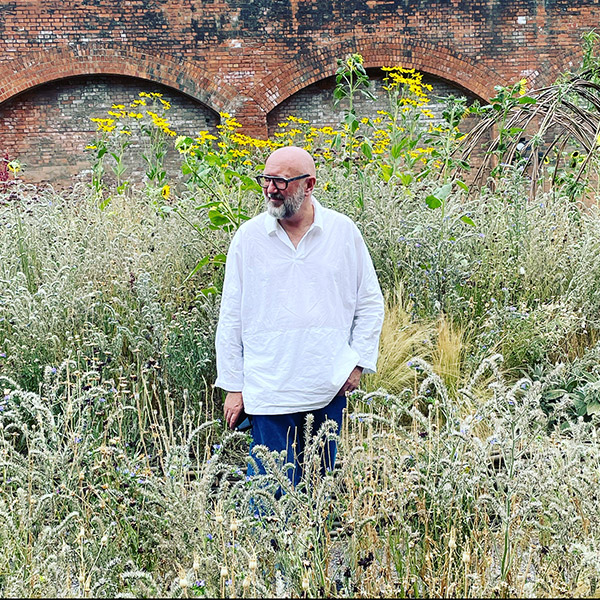
Recently WLA was able to catch up with Andrew Grant, RDI – Founder and Director, Grant Associates, about the future of landscape architecture. Andrew Grant is a landscape architect whose work explores the connection between people and nature. He started his company, Grant Associates, 25 years ago in 1997; it has now grown into an international design studio with offices in Bath and Singapore. His approach is based around using creative ecology to find solutions to the major challenges of climate change, biodiversity loss and improve human quality of life, health and well-being.
Andrew’s pioneering global work in landscape architecture includes the Gardens by the Bay and iconic Supertree grove in Singapore and the Accordia housing development in Cambridge
WLA: What is the future of landscape architecture?
AG: In a broken world, landscape architects will be healers. There are not enough landscape architects to massively influence the rate of habitat loss and impacts of climate change but, alongside shouting as loud as we can within the multiple voices of the built environment, we can demonstrate how to mitigate impacts and create a more balanced environment that nurtures human wellbeing and biodiversity.
When I say ‘healing’ I don’t just mean fixing the physical fabric of landscapes. We must also create places that are inspirational and uplifting.
Not everyone can visit the wonders of the natural world, but as designers, we can create moments in cities and rural areas that evoke nature’s spirit and beauty whilst creating opportunities for biodiversity to thrive.
WLA: How can landscape architects influence the design professions?
AG: Landscape architects can demonstrate how to design like we are part of Nature
‘We are all Bloody Animals…it’s really weird that with all our technology, with all our instruments, with all our intelligence, still we are really basic.’ – Anthony Gormley, artist
Anthony Gormley’s work is about the perception of connections between humans and the world around us. He makes the point that despite all of our extraordinary ingenuity in inventing machines and systems and technologies, we are still just ‘bloody animals’ with all the raw instincts of nature.
Despite this, the climate and biodiversity emergencies indicate we have forgotten these origins; instead our creativity has nurtured processes, technologies and material uses that are destroying the very world that sustains our human life. This is also at a time when we know how important contact to the natural world is for sustaining and improving our overall quality of life. It is literally our life support system for food, water, air and our mental and physical health.
Landscape architects can – and must -demonstrate to all design professionals how to design like we are part of nature.
WLA: How can the landscape architecture profession improve?
AG: All landscape architects should consciously design in favour of the planet and have a common voice in doing so.
We should be more confident in our value to wider society and be better at communicating our creative ability to deliver environmental and social good.
We should be more confident in our ability to lead and coordinate multidisciplinary design teams. This is surely the greatest opportunity for landscape architects to influence the planning and design of cities and spaces.
We should re-tune our individual approaches to the challenges and opportunities of today and not cling onto how things used to be done or outmoded concepts of aesthetics and design.
We should be more analytical and, if necessary, critical of architects, engineers, cost consultants, project managers and developers approaches to landscape. We are trained professionals in landscape.
We should fine-tune our knowledge of those metrics that impact on climate and biodiversity, such as embodied carbon and ecosystem services.
We should go out of our way to inspire school-aged children and encourage them to take up landscape architecture as a profession.
WLA: How do you think the landscape architecture profession can grow?
AG: It’s not about growth in numbers; it’s about growth in influence and effect.
‘Growth’ is a topical subject in the UK in late 2022: grow the economy, grow earnings, grow business. This mantra for more and more is ultimately destructive. It has led directly to various environmental crises across the planet and is fracturing social cohesion.
The reality for the landscape profession in the UK is that we represent less than 1% of built environment professionals, with engineers way out ahead in terms of numbers and influence. However desirable, achieving landscape professional numbers to be comparable to architects and engineers is a fantasy, certainly in the immediate future.
Sadly, we are also a profession judged on our perceived relevance to the policies and thinking of the day. For too long, we have been seen as the decorative icing rather than the core ingredient of sustainable planning and design.
The starting point has to be about the relevance and quality of the service we offer. The rush for increased numbers of landscape architects by inviting in multiple compatible environmental professionals certainly builds a better image of relevance but at the cost of diluting the quality and consistency of what the profession offers.
To compensate it means that every landscape professional needs to raise their game in terms of delivering more relevant and better quality work. We need to be embedded within every organisation, authority and review panel seeking better planning and design solutions for the planet and people. We should be leading committees, agencies and advisory groups. More importantly, we should be in roles that influence governments and local authorities since these are the agencies that set the scene for every single project.
Thank you to Andrew for providing some insights into his perspective on the future of landscape architecture.
